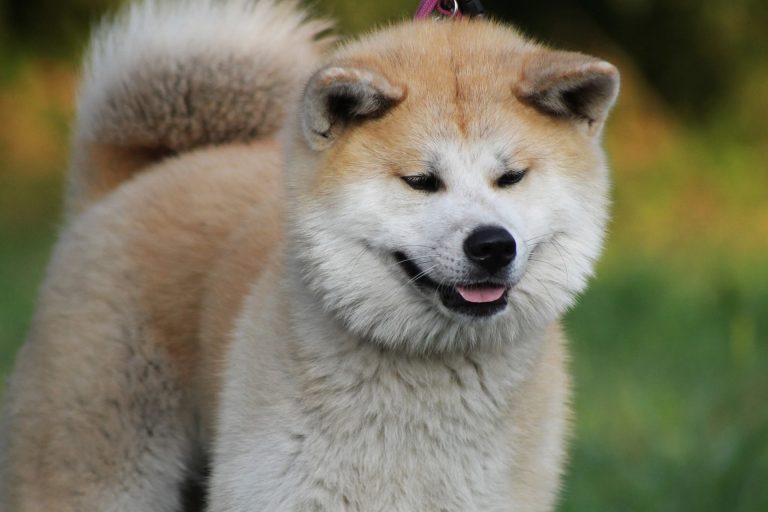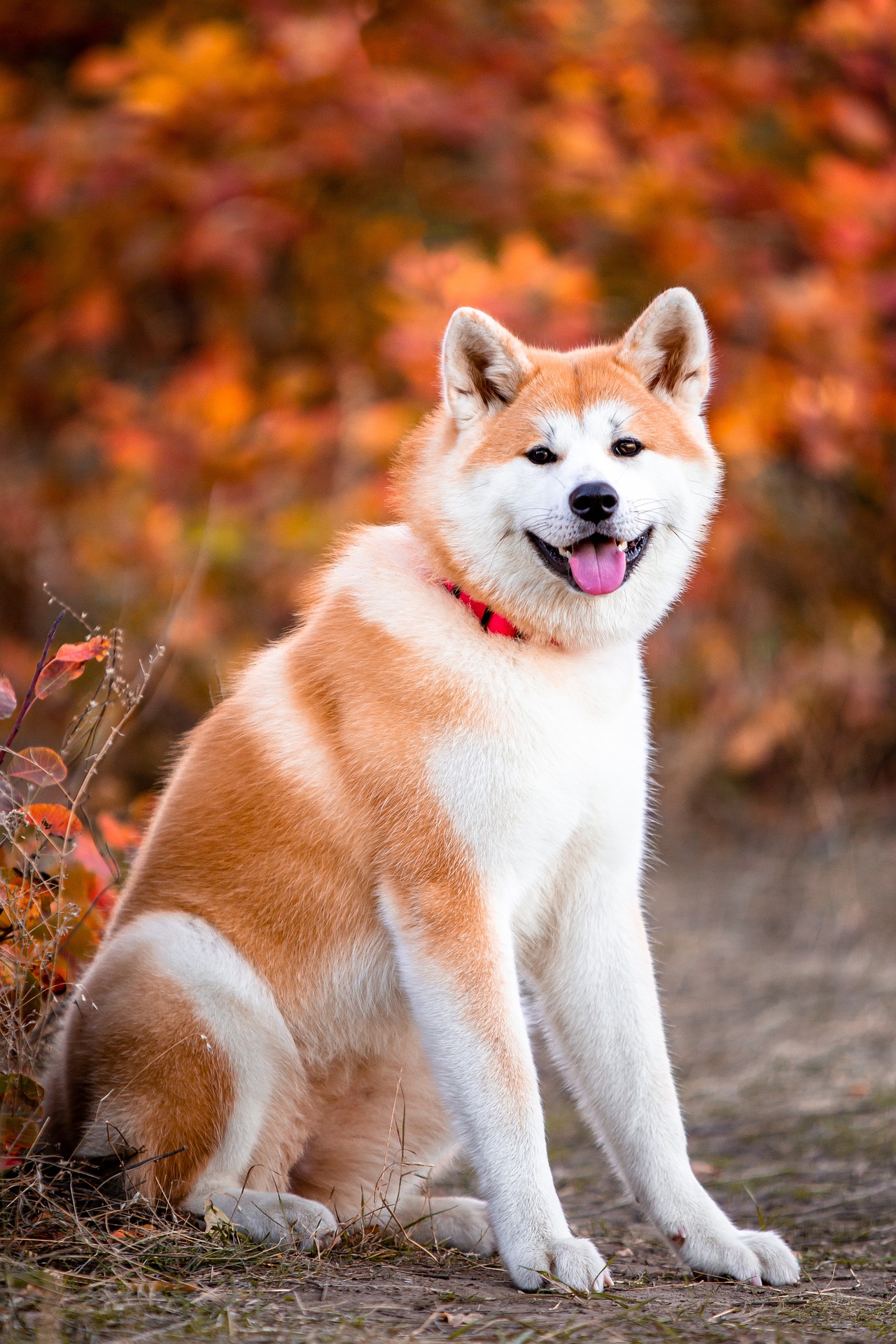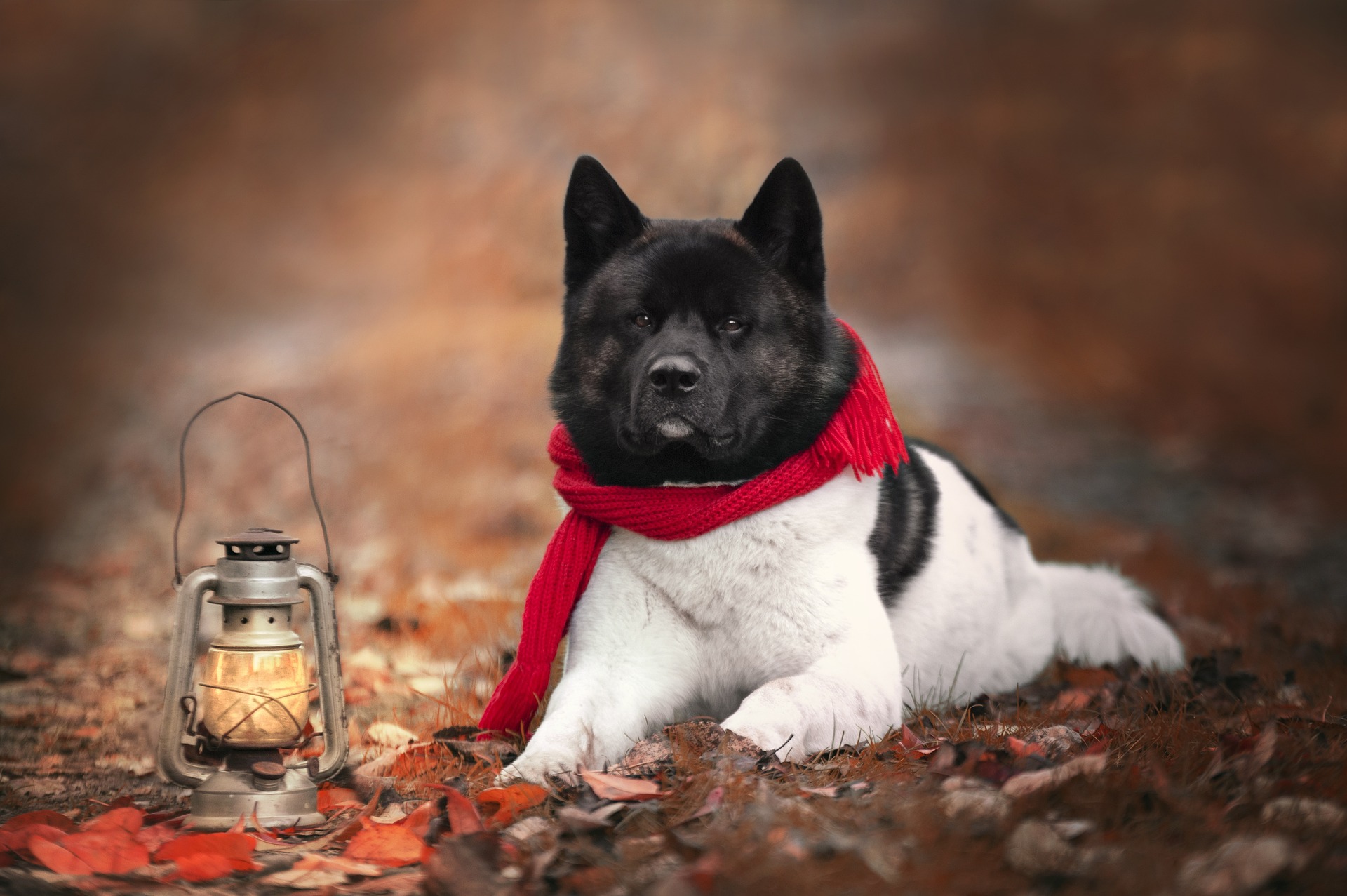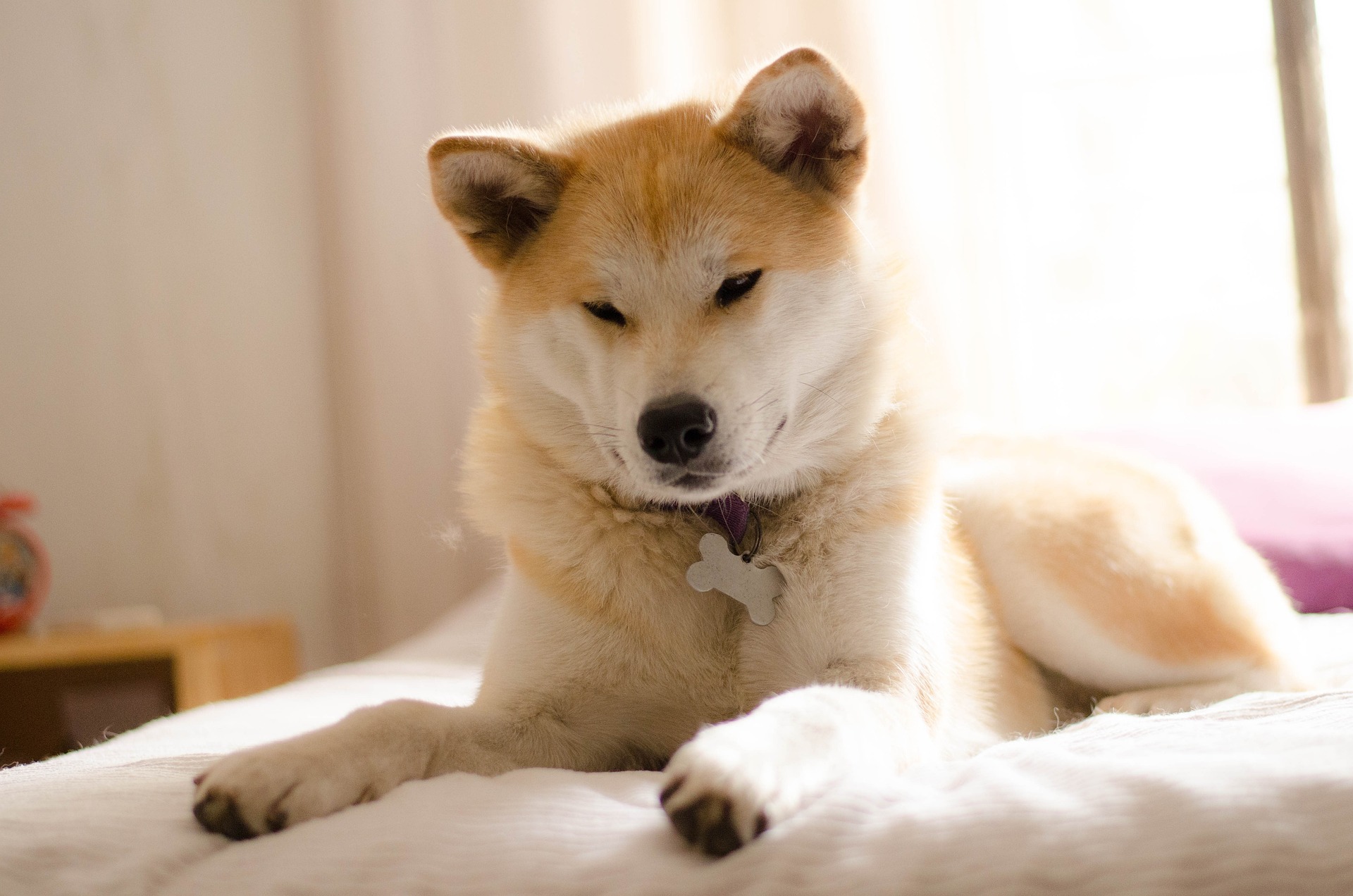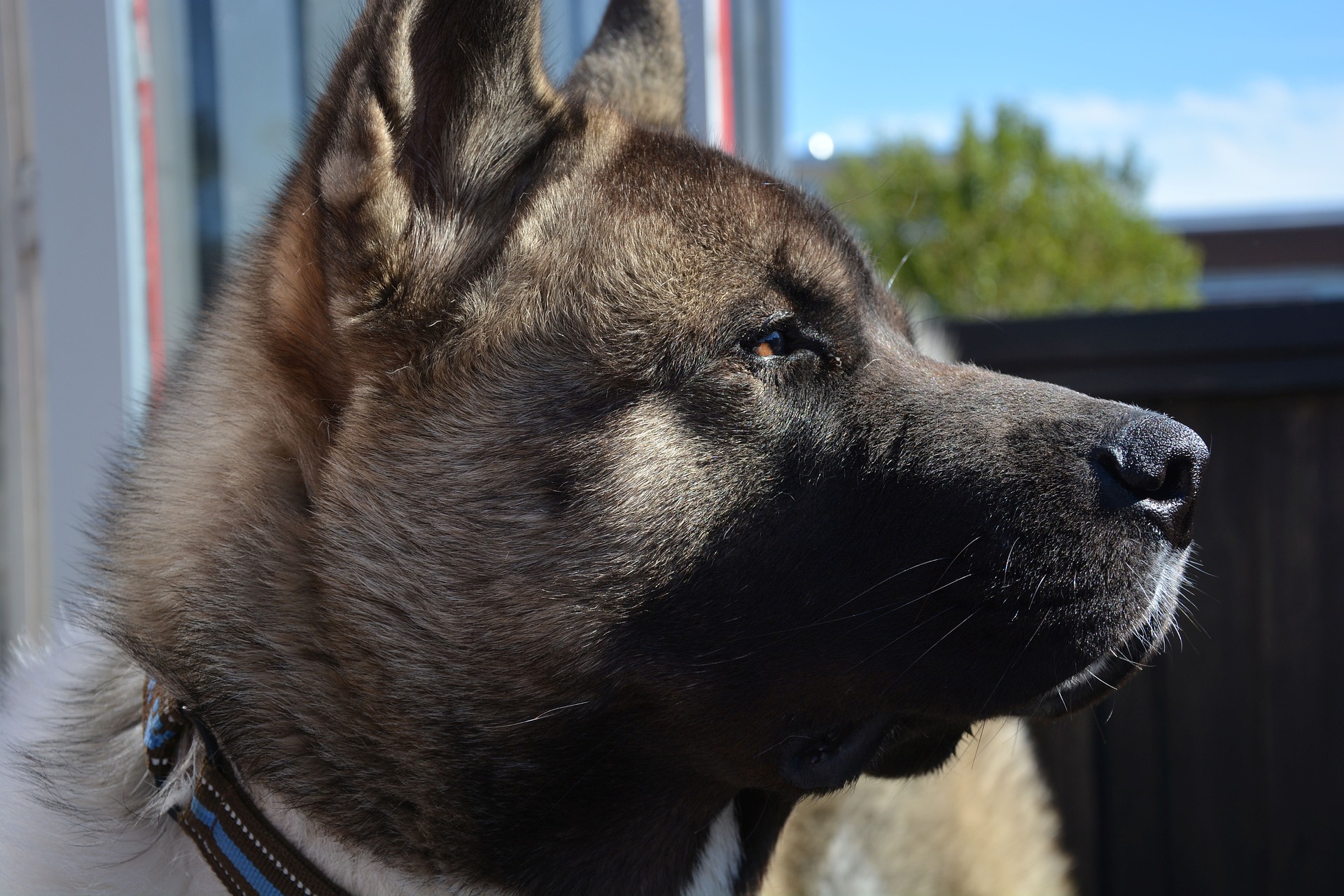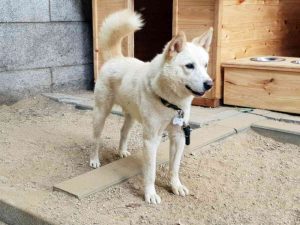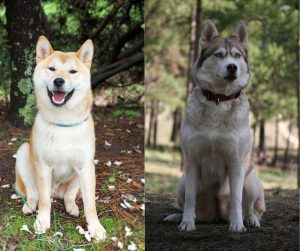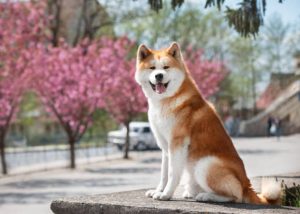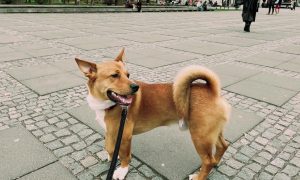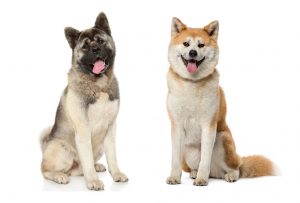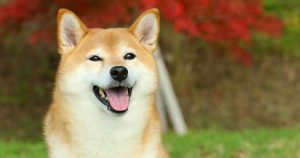Akitas are a majestic dog breed known for their imposing stature and diverse coat colors. These canines are divided into two primary categories based on their regions of origin: the Japanese Akita Inu and the American Akita.
Distinct in their appearance, each type adheres to different breed standards, especially when it comes to coat colors and patterns.
The Japanese Akita typically presents in more reserved hues such as red, white, and brindle, and is famous for its urajiro markings, which are lighter-colored areas on the cheeks, chest, belly, and legs.
On the other hand, the American Akita is recognized by a more lenient standard, allowing for a broad spectrum of colors.
This variety paints a colorful canvas of the breed’s rich genetics and contributes to each Akita’s unique appearance.
Yet, it’s not just about aesthetics; the coat colors and patterns of an Akita can sometimes offer insights into their health and genetic lineage.
With such an array of coat options, prospective Akita owners can delight in finding a companion that resonates with their personal taste. Let’s take a look at the Japanese Akita colors accepted by the American Kennel Club.
Key Takeaways
- Akitas are recognized by a spectrum of coat colors and patterns, with variations between Japanese and American standards
- The unique appearance and genetics of Akitas underscore the importance of breed-specific care and grooming
- Their coat, while one aspect of their allure, is matched by their loyal temperament and distinct social traits
Akita Colors and Breed Standards
When speaking about Akitas, their coat colors are not just vibrant and diverse; they’re closely tied to the breed’s standards set by canine organizations like the American Kennel Club (AKC).
Recognized Coat Colors
Akitas sport a remarkable palette of coat colors. According to the American Kennel Club standards, the American Akita can have any coat color, including but not limited to red, white, brindle, black, brown, cream, and pinto. The only exclusions are merle markings and liver colorations.
Conversely, the Japanese Akita has more restrictive color options, being usually red, brindle, white, or a combination known as sesame Akita (red with black tips). We also have to make the distinction between the Japanese Akita and American Akita. The latter looks completely different than what people are familiar with the word Akita Inu.
Breed-Specific Markings
What sets the Japanese Akita Inu apart are its unique urajiro markings, which are areas of lighter pigment. These are typically found on the cheeks, the sides of the muzzle extending down the front of the neck, the chest, the belly, the underside of the tail, and inside the legs.
For the Japanese Akita Inu colors, these urajiro markings are essential and a defining characteristic, while the broader color acceptance in the American Akita doesn’t emphasize these markings as much.
Color Changes With Age
An Akita puppy’s coat may change color as they grow. This is quite natural and is often observed during the transition from puppyhood to adulthood.
For instance, an Akita puppy born with a black coat may lighten to a grey or silver as they mature.
Patterns and Markings in Akita Coats
Akitas showcase a stunning array of coat patterns and markings, each contributing to the individuality of the dog.
Common Akita Patterns
The Akita dog breed possesses a spectrum of coat patterns, some of the most common being brindle, where stripes merge with the base coat color creating a tiger-stripe effect, and the striking pinto pattern, characterized by large patches of color contrasting with white.
The sesame pattern refers to a balance of white hairs mingled with the base color, leading to a subtle overlay that enhances the coat’s dimensionality.
“Urajiro” – Unique Markings of Japanese Akitas
The term “Urajiro” refers to the white markings present on Japanese Akitas, found on the cheeks, chest, belly, tail, and legs. These are not just random white patches, but specific symmetrical markings that are deemed essential in distinguishing the prestigious Japanese Akita from other variants.
Mask Variations
Akitas may also boast various mask variations, adding to their mystique and appeal.
The black mask features dark fur enveloping the face, often contrasting sharply with the body’s color. The black mask is commonly associated with the American Akita.
Conversely, a white mask can appear, though less frequently, blurring the facial lines and providing a softer expression.
These facial markings greatly influence the Akita’s appearance and can range from subtle to bold, often setting them apart from their kin. There also might be coat color variations if there is some kind of crossbreeding involved. Akitas are very similar to the Shiba Inu, another Japanese dog breed. While some people see only size as the difference between the Akita Inu and Shiba Inu, there is much more.
Health and Genetics of Coat Colors
When it comes to the majestic Akita dog breed, their coat colors do more than just make them stand out—they are a reflection of their genetics and can have implications for their health.
Impact of Genetics on Coat Color
Akitas display a brilliant array of coat colors, each the result of specific genetic combinations.
These colors can include red, white, brindle, and pinto, based on the genetic information passed down from their parents.
For example, white Akitas carry a gene that gives them a pure white coat without any markings.
Reputable breeders pay close attention to these genetic traits to maintain the purity of the breed and to predict the possible colors of future litters.
When two Akitas with diverse color genes are bred, their puppies’ coats can present a range of colors and patterns.
The specific genetic makeup, including dominant and recessive genes, ultimately determines the puppy’s coat color. Alongside coat color, genetics can also influence factors like coat thickness and texture.
Health Considerations Linked to Colors
While an Akita’s coat color is primarily a cosmetic attribute, some correlations between color and health have been observed.
Genetics may influence more than appearance, potentially affecting the dog’s overall well-being.
For instance, Akitas with white coats can sometimes be prone to deafness, a condition seen in several breeds where the lack of pigment cells in the inner ear may lead to hearing issues.
It’s also important for prospective owners and breeders to conduct thorough genetic testing for hereditary conditions.
While these tests might not directly pertain to coat color, they contribute to the long-term health and vitality of purebred dogs.
The goal is always the same—to ensure the health and happiness of each Akita, regardless of their stunning coat colors.
Akita Care and Grooming
Akitas are gorgeous dogs with coats that come in a variety of colors, necessitating particular grooming approaches. Here’s how owners can keep their Akita looking its best.
Grooming Needs for Different Colors
Red, White, and Brindle: These three primary colors in Akitas don’t just affect appearance—they also give clues to their grooming needs.
The deep hues of a red coat and the striking contrasts in a brindle pattern can hide dirt a bit better than white, but don’t be fooled; they all need regular grooming.
- White Akitas: Extra attention is required since dirt is more visible. They have no mask, and to keep that pure white coat sparkling, they’ll need more frequent baths
- Red and Brindle: Regular brushing to maintain the richness of the color and to spot clean as needed will keep these Akitas shining
Shedding and Coat Maintenance
Dealing with the Double Coat: A shedding Akita can seem like a flurry of fur. They have a double coat, meaning there’s a dense undercoat beneath the surface that sheds especially during the change of seasons.
- Spring and Fall: These are peak shedding times. Owners might find generous amounts of fur around the house. Stepping up the brushing frequency during this time can help manage the shedding
Consistent Brushing: Regardless of color, brushing is essential. It helps remove dead hairs, distributes natural oils, and keeps the coat healthy.
For Akitas, a thorough brushing a couple of times a week should suffice, but during shedding season, daily brushing might be in order.
- Brush Types: A pin brush and an undercoat rake are great tools for the job. The pin brush can navigate through the coarse outer coat, while the rake is ideal for getting to the fluffy undercoat
Akita Temperament and Social Traits
When we talk about Akitas, it’s like discussing a friend who is confident, dignified, and profoundly loyal. They carry a reputation for being faithful protectors of their families, showcasing a temperament that blends courage with affection.
Personality by Color?
Can the color of an Akita really hint at their personality? While there’s no scientific evidence to support a link between coat color and temperament, many Akita owners love to share anecdotes about their brave reds or serene whites.
- Red Akitas: Often described as bold and spirited
- White Akitas: They may appear calm and reserved
- Brindle Akitas: Brindles often carry a wise and majestic aura
Remember, an Akita’s individual personality will depend more on upbringing and dog training rather than fur color.
The Akita as a Family Pet
When they join a home, Akitas become more than pets; they turn into loyal family members.
Their protective instincts make them exceptional guardians.
This guard dog often develops a strong bond with their humans, and that’s what makes them such dedicated protectors.
- Loyalty: Akitas are known to show unwavering loyalty to their family
- Family: They thrive on companionship, often forming a close-knit bond
- Protectors: With a fearless heart, Akitas stand ready to safeguard their loved ones
Training and early socialization are key to fostering these traits positively. This ensures that their protective nature doesn’t become overly dominant.
The Akita’s faithful presence weaves into the fabric of a family, making every day feel a bit more secure.

